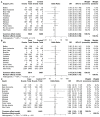Epidemiological Surveillance Reveals the Rise and Establishment of the Omicron SARS-CoV-2 Variant in Brazil
- PMID: 37112997
- PMCID: PMC10145299
- DOI: 10.3390/v15041017
Epidemiological Surveillance Reveals the Rise and Establishment of the Omicron SARS-CoV-2 Variant in Brazil
Abstract
The introduction of SARS-CoV-2 variants of concern (VOCs) in Brazil has been associated with major impacts on the epidemiological and public health scenario. In this study, 291,571 samples were investigated for SARS-CoV-2 variants from August 2021 to March 2022 (the highest peak of positive cases) in four geographical regions of Brazil. To identify the frequency, introduction, and dispersion of SARS-CoV-2 variants in 12 Brazilian capitals, VOCs defining spike mutations were identified in 35,735 samples through genotyping and viral genome sequencing. Omicron VOC was detected in late November 2021 and replaced the Delta VOC in approximately 3.5 weeks. We estimated viral load differences between SARS-CoV-2 Delta and Omicron through the evaluation of the RT-qPCR cycle threshold (Ct) score in 77,262 samples. The analysis demonstrated that the Omicron VOC has a lower viral load in infected patients than the Delta VOC. Analyses of clinical outcomes in 17,586 patients across the country indicated that individuals infected with Omicron were less likely to need ventilatory support. The results of our study reinforce the importance of surveillance programs at the national level and showed the introduction and faster dispersion of Omicron over Delta VOC in Brazil without increasing the numbers of severe cases of COVID-19.
Keywords: COVID-19; SARS-CoV-2; epidemiologic surveillance; symptoms; variants; viral load.
Conflict of interest statement
The authors declare no conflict of interest.
Figures





References
-
- World Health Organization WHO Coronavirus (COVID-19) Dashboard. [(accessed on 23 February 2023)]. Available online: https://covid19.who.int/
-
- Brasil Painel Coronavírus. [(accessed on 11 December 2022)]; Available online: https://covid.saude.gov.br.
Publication types
MeSH terms
Supplementary concepts
LinkOut - more resources
Full Text Sources
Medical
Miscellaneous

